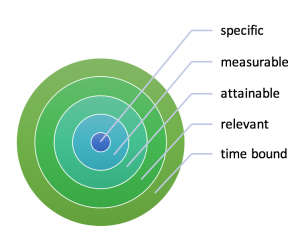Quality in Research for DS1 – 07.18.2018
This is a reading and writing response for Wednesday, July 18, 2018.
Topic: The Quality of Qualitative Research
Title: SMART start to research
When considering the quality of qualitative research, there exist ranges from ‘good enough’ to ‘excellent’. Excellence is achievable when researchers attend to the categories and markers explored by Luttrell (2000) and Meyrick (2006), and outlined by Tracy (2010).
Tracy (2010) examines eight “universal hallmarks for quality qualitative methods across paradigms” (p. 837) that “provide a path to expertise” (p. 838). The checklist of factors, with subsequent ‘look fors’, provide structure which researchers can apply, when designing a project. Luttrell (2000), contends that in order to be ‘good enough’ researchers need to sustain the “creative, inventive, emotionally charged, and uneasy” (p. 8) aspects of the work. In attempting to identify key markers of rigorous qualitative research, Meyrick (2006) proposes a framework as a “first step towards how to judge, compare and synthesize qualitative evidence” in order to “expand the range of evidence used to inform what works in health” (p. 807). This framework examines the transparency and systematicity of the research in order to evaluate it’s ‘goodness’.
 In a K-12 classroom, teachers assess student work using similar scales or ranges and use a rubric based on success criteria. The success criteria are co-constructed by the teacher and students so the expectations and outcomes of the work are specific, measurable, attainable, relevant and time bound (SMART goals). This is not to say that the quality of qualitative research can be measured in similar ways, but having a moving, fluid learning target doesn’t lead to student understanding, nor does it lead to quality research.
In a K-12 classroom, teachers assess student work using similar scales or ranges and use a rubric based on success criteria. The success criteria are co-constructed by the teacher and students so the expectations and outcomes of the work are specific, measurable, attainable, relevant and time bound (SMART goals). This is not to say that the quality of qualitative research can be measured in similar ways, but having a moving, fluid learning target doesn’t lead to student understanding, nor does it lead to quality research.
Each author provides qualifiers for the quality of qualitative research that are helpful for novice researchers. They also provide a caution. Tracy (2000) believes that “we need not be so tied to epistemology or ontology … that we cannot agree on several common end goals of good qualitative research” (p. 849) in order to “provide a common language of excellence for qualitative research and a useful pedagogical compass” (p. 849). Luttrell (2000) ascertains that the “research question, study design, and theoretical-explanatory approaches, coupled with one’s particular temperament, personality, and intended audience” are elements that shape the research, as she “endorses the use of a variety of methods to bring intellectual labor and life into closer relation” (p. 8). Meyrick (2006) proposes a careful analysis of the researcher’s theoretical and epistemological stance; examination of the clarity of the aims and objectives as well as the research question; analysis of the sytematicity of data collection methods; consideration of the transparency and systematicity of the data analysis including triangulation, internal and external validation, and the audit trail established; and verification of the generalizability, applicability, and transferability of the results reported, in order to establish the rigor of the qualitative research project.
A framework for success criteria with qualitative research can be established, based on the chart provided by Tracy (2010). Individual researchers and research teams can establish their own set of SMART goals from this framework, uniquely suited to the research being conducted, to make these projects excellent.
References
Luttrell, W. (2000). ” Good enough” methods for ethnographic research. Harvard Educational Review, 70(4), 499.
Meyrick, J. (2006). What is good qualitative research? A first step towards a comprehensive approach to judging rigour/quality. Journal of Health Psychology, 11(5), 799-808.
Tracy, S. J. (2010). Qualitative quality: Eight “big-tent” criteria for excellent qualitative research. Qualitative inquiry, 16(10), 837-851.
Photo by Thomas AE on Unsplash
